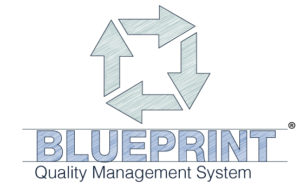A great deal of the conversation related to the Affordable Care Act has focused on the increase in patient responsibility. While this is undoubtedly true, it is important to note that a sizeable portion of the formerly uninsured population will not carry some form of insurance. It is assumed that the majority of that population will select high deductible health plans. Quickly identifying the estimated deductible through effective front end processes and rolling the appropriate balance to patient responsibility will be important in the new world of health care exchanges.
Equally important is the implementation of an effective denials management program. As you know, re-billing and appeals take time and energy away from an already taxed business office. Using an effective denials management program can improve the effectiveness of your revenue cycle by minimizing denials.
Denials management is typically associated with “denials after the fact.” A denial may be the result of a true denial, a lower-than-expected reimbursement or no insurance payment at all. To truly minimize denials, rather than simply reacting to them, the revenue cycle leader must truly understand why claims are denied. The best practice is to utilize the information found on the 835 to trend and track the denials at the time of payment posting. Denials should be tracked by category and subcategory to determine the nature of the denial – Clinical or Technical. Codes should then be tracked at the type or CARC code (Claim Adjustment Reason Code). The denial type should be sorted by payer, provider, and biller.
By understanding the reason for the denial you will be able to establish trends by payer, admitting source or biller. As trends are identified, you can work to determine the root cause of the denial. This information should then be shared throughout the organization to establish processes and training protocols to avoid the denials in the future. The key to this exercise is getting to the root cause.
So where do you start? First – sort your denials by occurrence and dollar amount. Next, look at your top payers and select the top ten denials for your top payers. Once the information has been gathered and analyzed, it is important to share the details throughout the revenue cycle. This sharing of trends with the front end or access groups will create a closed loop in which known causes are rectified prior to claim submission.
As you work the denials, remember how important it is to work them in a timely manner. Communication with the payer is important in the process. Third-party payers have specific instructions for appealing denials and their instructions should be appropriately followed. Those who specialize in the re-billing and appeals process should develop a relationship with provider representatives at high-volume payers. Reimbursements generated from successful appeals can be tracked to demonstrate the value of monitoring and working denials. Being aware of the type of denials by payer enables the provider to take the appropriate action and potentially avoid similar denials going forward.
Are you interested in a strong denial management solution? In addition to a group of employees familiar with the insurance process, State Collection Service recently invested in Artiva Healthcare, a platform designed to track denials, create the appropriate workflows for rebilling and appeals, and follow up with the appropriate payers at the appropriate intervals. Contact your Account Executive today for like more information!
About State Collection Service, Inc.
Since 1949, State Collection Service has provided quality collection service to countless healthcare organizations.
Through experience and innovation, State Collection Service has grown to become a tremendously credible and nationally-recognized collection agency offering services from pre-registration to bad debt. It is upon the basis of ethical behavior and a dedication to integrity that each State Collection Service employee works to uphold the company’s vision – Partnerships for a Lifetime.
*This article first appeared in “A State Collection Service, Inc. Newsletter Volume 20, Issue 2, Second Quarter 2014”















